If you know Google, you know they’re constantly changing the feature lists and interoperability of their various tools. Google Drive is no different. There’s a whole system for requesting features to be added to Google Workspace and the various Google programs, and while most of those requests fall on deaf ears, now and then, one of them will make it through. Otherwise, Google will add features as the mood strikes them, sometimes beneficial, sometimes nonsensical, and sometimes everyone asks, “Who is this even for?”
So, what does 2024 hold for Google Drive? Truthfully, this early in the year, it’s impossible to say. Google doesn’t exactly publish their plans very far in advance unless they’re major shifts, like the end-of-life date for a Google product or a major change to something like storage capacity or usage limits. However, there have been a few cases where even that last one doesn’t get an announcement.
In any case, the fact remains that Google plays things close to the chest, and I don’t have any insider information on what’s coming. All I can do is report on the most recent updates. So, what are the latest features and updates added to Google Drive? Let’s go through the list.
New Homepage View
Perhaps the single biggest change Google has made to Drive in years, this rapid-release update is still in the process of rolling out. Some people have already seen it in action, while others will have to wait. Designed to “accelerate user productivity,” the new homepage view for Google Drive puts more options for sorting, filtering, and viewing recently-accessed and necessary files at your fingertips.

What’s included?
- Recent and important files and folders are shown at the top, as determined by Google’s proprietary machine learning systems and your usage history for those files and folders, as well as signals like files that are attached to upcoming Google Calendar appointments.
- More easily accessible filters right on the home view to let you filter by type of file, who has access to or owns a file, when the file was last modified, and where the file is located.
- A “more modern design” that brings Drive in line with the overall Google app design standards they outline in Material 3, their cohesive design initiative. Truthfully, it doesn’t look or feel that different, though.
This new home screen is also your new default. If you prefer the old method of seeing your regular root directory, you can change it in the settings or in the banner at the top of the screen when you log into drive.google.com. I encourage you to try the new system out a bit before reverting, just in case, though; Google is also known for eventually removing those rollback options regardless of user preferences.
This new homepage system was also rolled out a month earlier for Android and iOS devices. Obviously, the interface is a little different there, but the new features and filters, as well as the activity view default, hit there first.
People Filters for Drive Files
You might see where I mentioned filtering by access and ownership; this is the “People” filter, which is itself a new feature that Google only rolled out last November. It essentially just allows you to filter through your files based on who owns them and who has access to them, including both individual owners and groups.
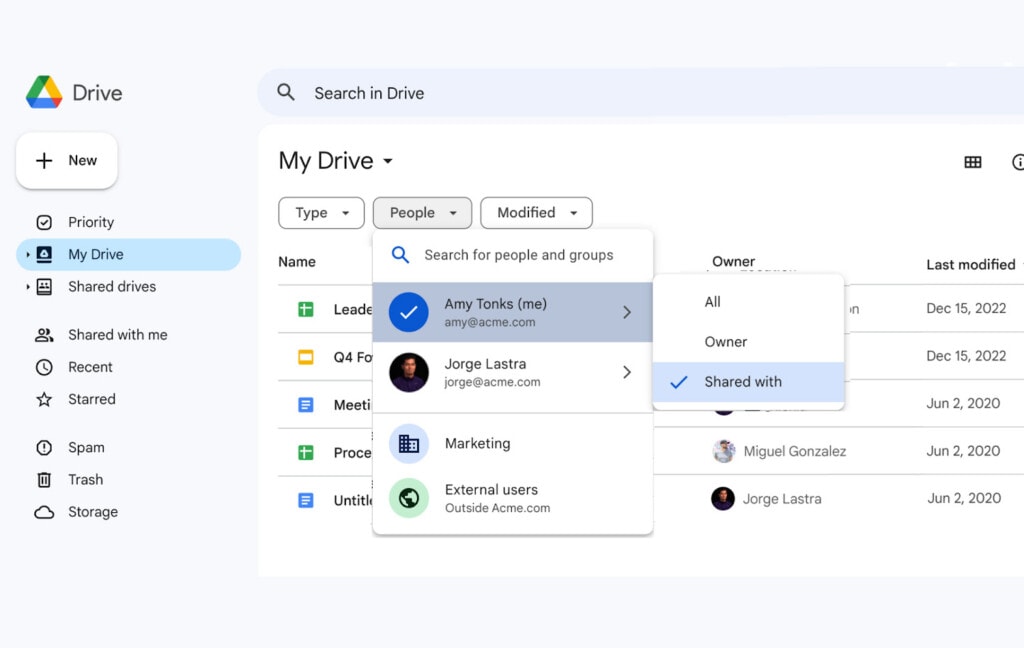
This is another of those features that people have been requesting for years, and they finally got around to implementing. About time, right?
Better Abuse Reporting
One of the issues that plagued Google Drive users, especially Android phone users, throughout 2023 was Google Drive spam. Spammers found that all they needed was your email address, and they could share files with you, which would generate a push notification to your device, displaying whatever NSFW or other scam offer they were pushing. Google’s systems were generally good at removing those files before you could harm your system by accessing them, but there was no way to disable the notifications.
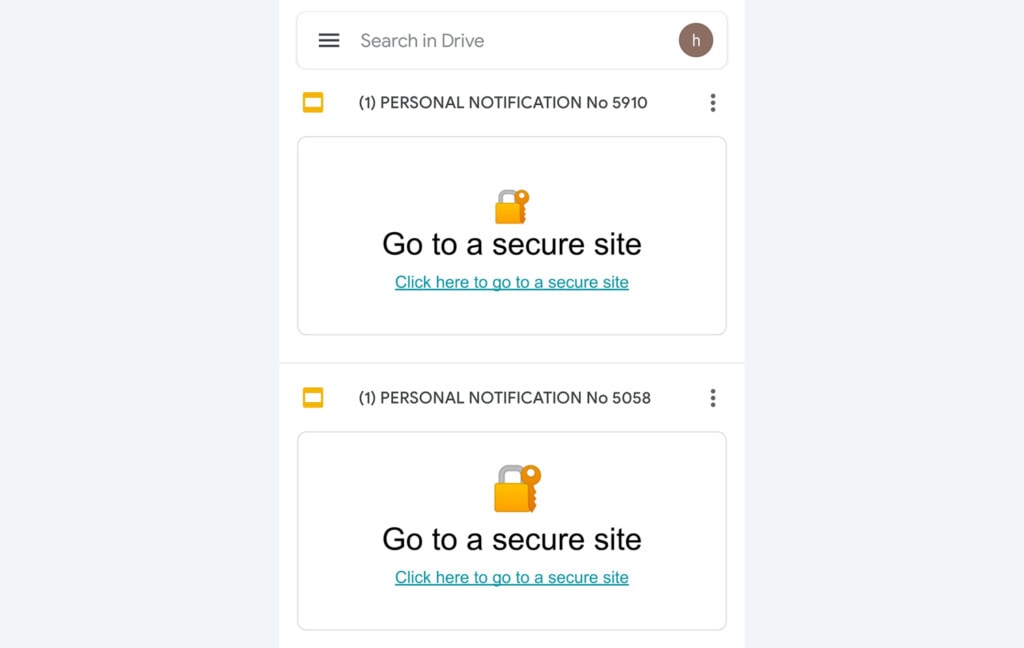
There’s still no easy way to disable those notifications (it’s all or nothing, so if you use push notifications for any work-related purpose, you have to stay open to the spam), but they added better ways to report the accounts doing the spamming. This all helps fuel their machine learning and proactive filtering.
Anecdotally, I was getting hammered with that spam for about a month in the middle of 2023, and then it all but disappeared, so something managed to put a stop to it. Whether that was Google themselves or just a dearth of people falling for the spam, I couldn’t tell you.
Enforced Encryption
Another new update from the end of 2023: Google is allowing Workspace Admins to force client-side encryption for new files. It can be enabled as default for new Gmail messages, Calendar events, files made with Docs, Sheets, or Slides, and new files uploaded to Drive.
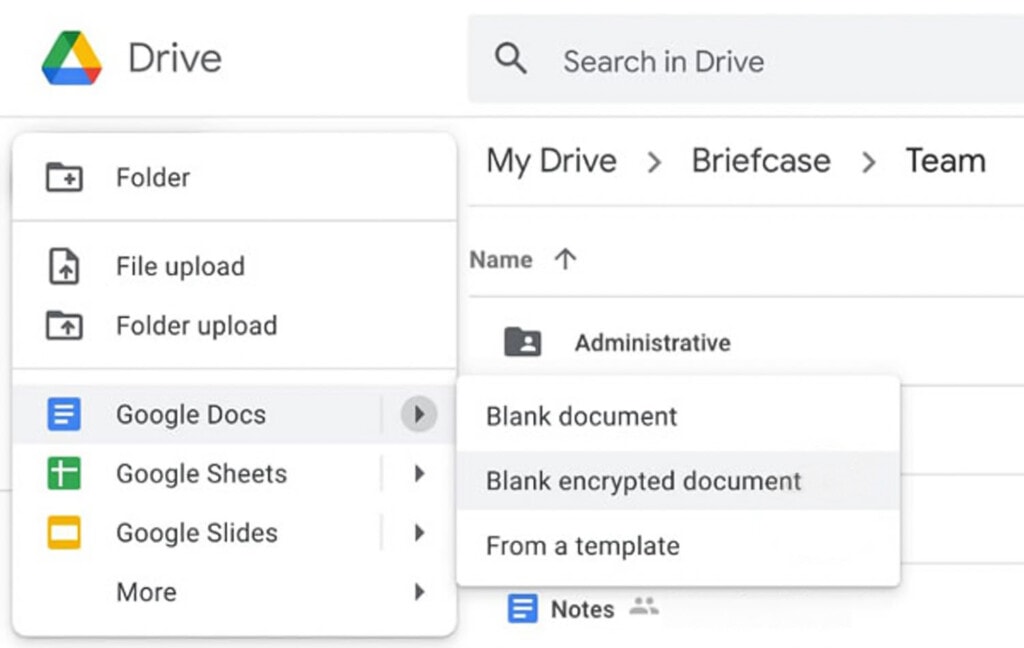
Added encryption is always a good idea for security, so this can be an excellent option to enable.
Document Signing in Docs and Drive
If you’ve ever had to manage large amounts of contracts or client signatures, you know it can be very tedious to have to use a third-party app like DocuSign or Adobe Sign. They don’t always work smoothly with other systems you might use, they require switching between apps just for a signature, and they’re usually quite a hassle.
This is, for once, a welcome feature, even if Google is just stealing it from other apps to add to part of their overall monopoly. Now, you can create a signature field in a document in your Drive and request the signature directly through Docs or Drive. Google has all of the usual security and record-keeping in place for the signatures and allows you to use advanced features like multi-signer document signatures, signatures from non-Gmail users, and, of course, signature auditing.
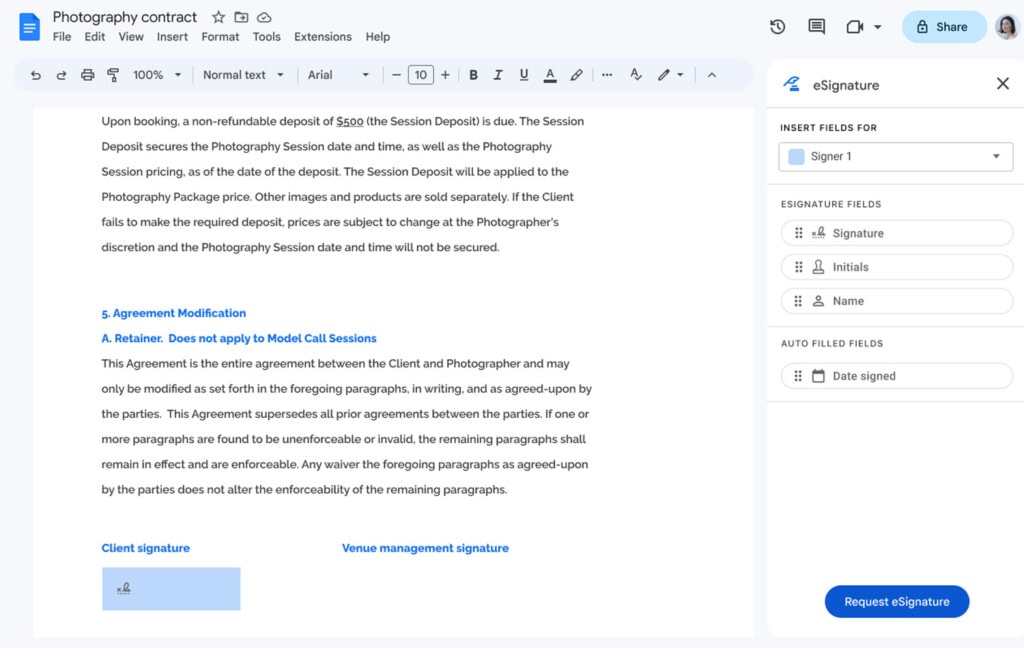
This is the first wave of additional features relating to signatures that they plan to roll out as well. They have announced upcoming features to add to this system, including the option to add other mandatory fields to the signature field and the option to make PDF templates.
This feature is still in beta testing, but you can expect a full release sometime soon in 2024 if it’s not already out by the time this post is published.
Enhancements for Document Scanning on Android
One of the nicer features you can use in the integration between Android devices and Google Drive is the ability to “scan” documents – paperwork, receipts, anything you like really – directly into Google Drive. I wrote about this feature before, even.
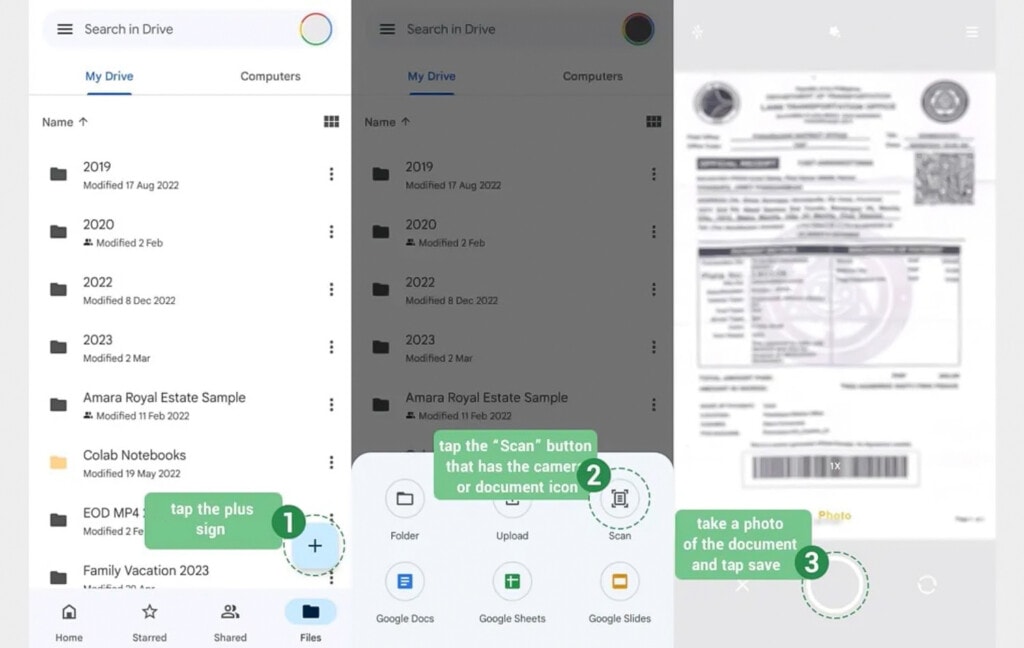
This isn’t a new feature, but Google has been adding to it over the past year. They recently added title suggestions based on the OCR data they get from the documents you scan, for example.
The newest enhancements range from “why didn’t this already exist?” to actually interesting features, including:
- Viewfinder indicators to center and align a document for the best scan.
- The ability to import photos from your camera instead of snapping a new photo.
- Expansion of the title suggestions feature to iOS Drive users.
Overall, it’s a pretty minor update, but it’s nice to know that it’s not a feature they’re abandoning.
Large Format Device Usability Enhancements
Most people using Google Drive are doing so either using a small Android device like a phone or a full-size device like a laptop or PC. A minority of users, though, use Android tablets and other large-format devices to access Google Drive. While the user base here is small, it was also understandably frustrated at the general lack of support and attention to usability for this mid-range interface.
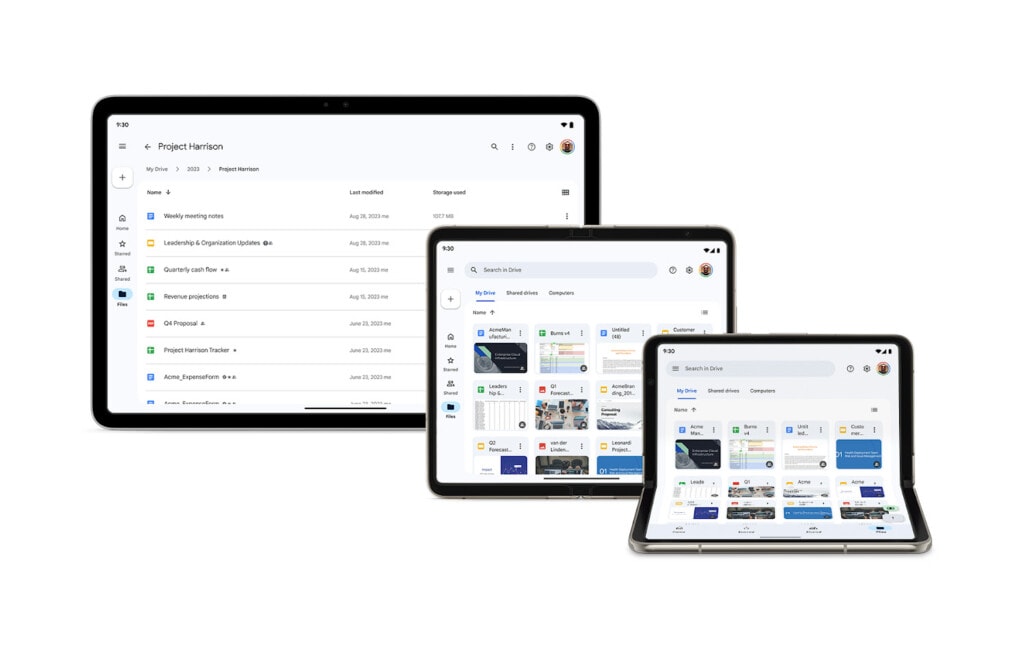
This feature update basically just adds a few little display enhancements, like a folder hierarchy display at the top, that make the large format feel less like a stretched-out phone interface and more like a usable interface designed for the space.
Expanded Access to Drive Logging
Another minor update: Google Drive log events have been a thing for enterprise and business editions for years.
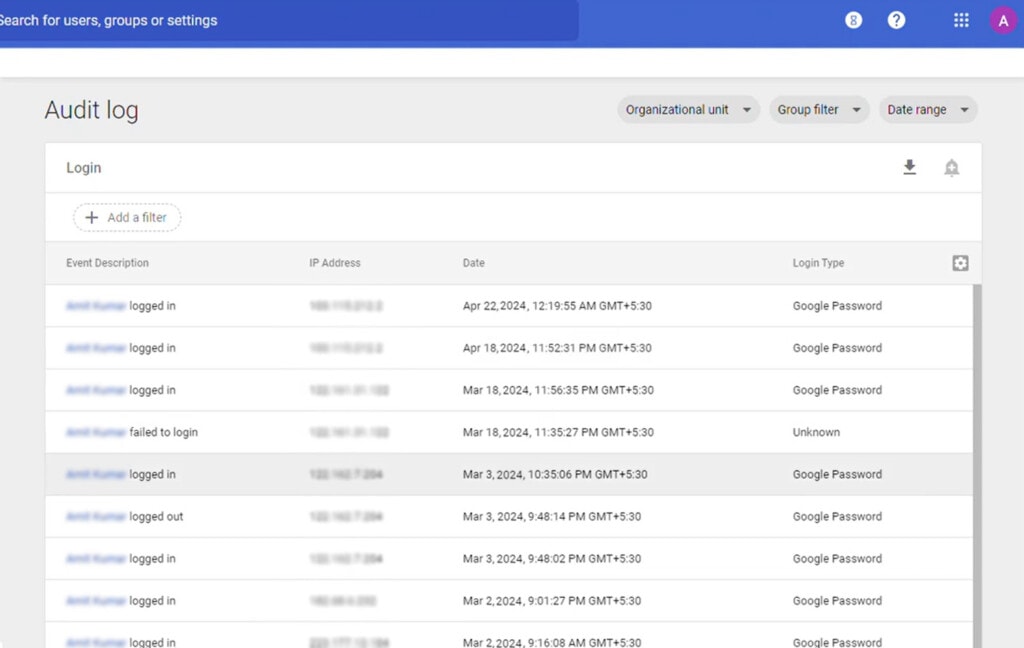
Google decided to make those logging features available to the Cloud Identity users as well, including those on both the premium and the free tiers. It’s minor, but it’s nice.
Better Drive Chat Action Management
This is another one of those features that you either use a ton or never use at all, and this enhancement is unlikely to change that in either direction. For those that use it, it’s incredible, however.
So, Google Drive has a form of chat system laced into it. There are comment fields for Drives and for files specifically, where people who collaborate on those files can leave notes for each other or collaborate in real-time without having to tab to something like Teams.
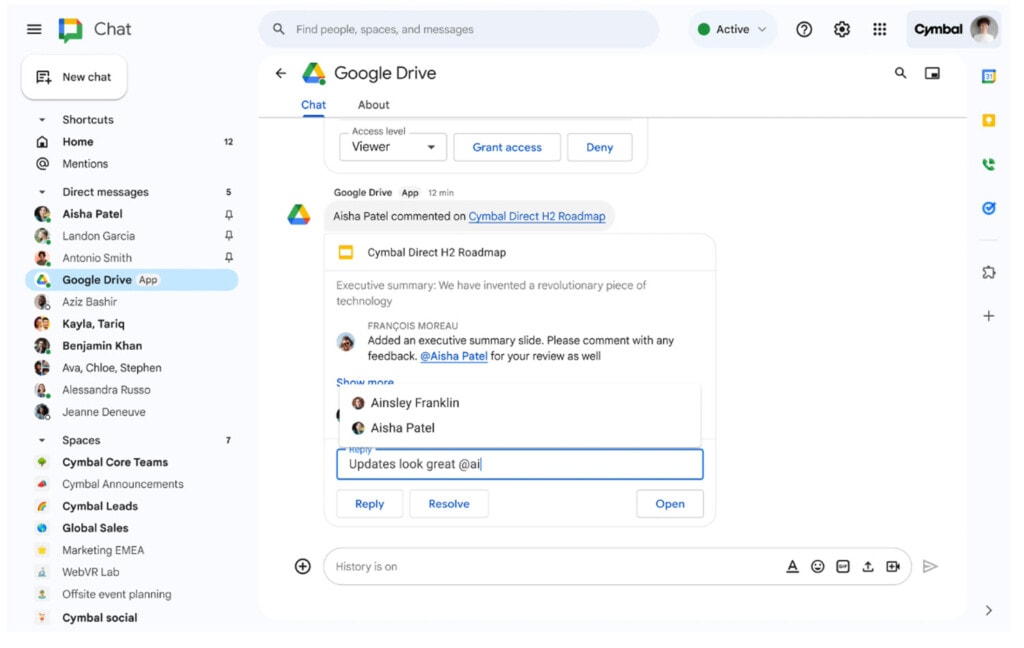
This feature rollout is all about enhancing this chat. Basically, it helps unify the comments and chats between Drive and the Docs/Sheets/Slides suite so comments within those files can be seen and resolved from outside of the files. It displays more of the comment threads at once for better context, as well. You can also use @mentions to tag and notify specific collaborators when a task needs their attention. All of this is visible and accessible from within Drive itself or from within chat.
Cookies have always been a bit of a contentious issue, and they’re more annoying than ever now with the variety of ways sites and apps try to adhere to GDPR regulations without giving up their valuable tracking data.
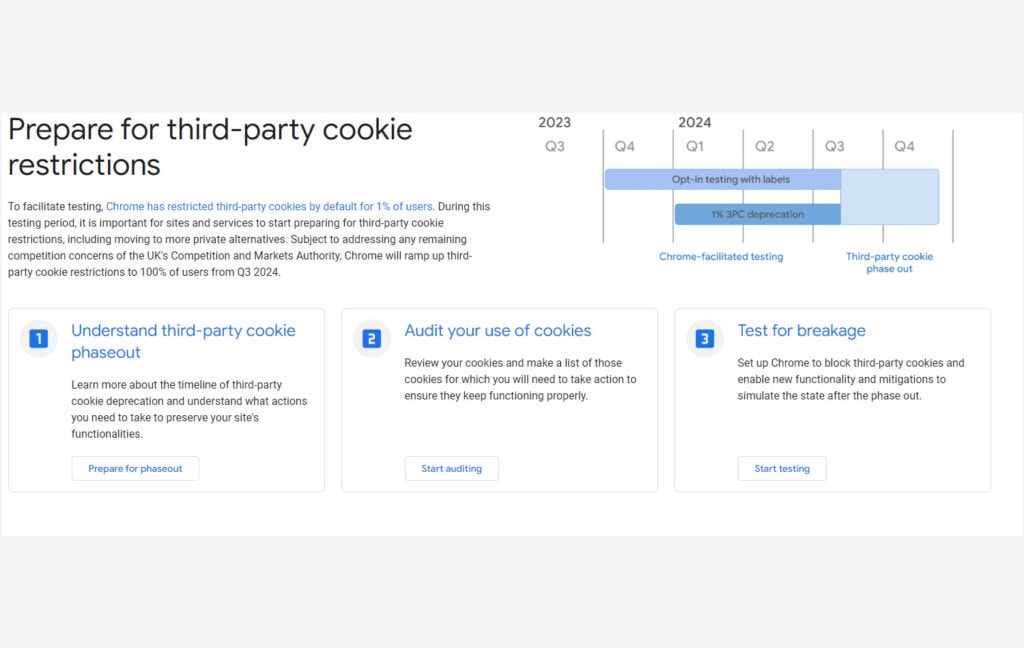
Cookies interact with Drive in a few ways. One of those ways was related to file downloads from Drive using URLs. This is a kind of complicated and technical change that doesn’t impact most users but can be extremely annoying for those who rely on it. Take a look at the link above, see if it applies to your workflows, and learn how to adjust ASAP. The rollout is already complete (it was finalized on January 2), but it’s still worth knowing what changed.
Easier File Locking
You’ve always been able to lock and restrict specific files in Drive, but until recently, if you wanted to, you had to go through a bunch of hoops in the File Approvals process or use commands through the Drive API. At some point, someone looked at this and realized it was dumb and unnecessary to restrict a security feature like this, and decided to make it easier to lock files in Drive.
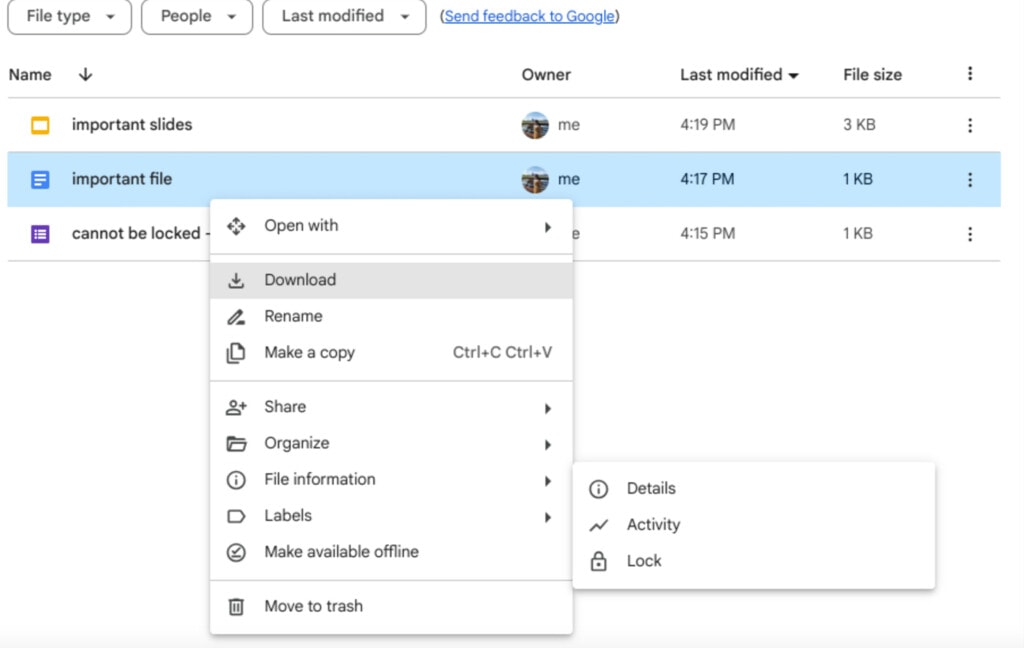
Now, if you want to lock a file, all you need to do is right-click it, choose File Information, and click Lock. This prevents anyone without sufficient permissions (Reviewers and below) from editing files, adding comments, or changing the files in much of any way.
New Ways to Clean and Organize a Drive
Just kidding. Google hasn’t really added any new features for organization or cleaning your Drive. The new Home View, allowing you to filter by access and modified date more easily, can be nice, but it’s not actually any different from what you could do with the advanced search before, and it still doesn’t allow for large bulk operations.
Fortunately, if you have a large and cluttered Drive, you can easily audit, organize, sort, evaluate, and even delete files you don’t need, all from one convenient interface. How? Just use Filerev.
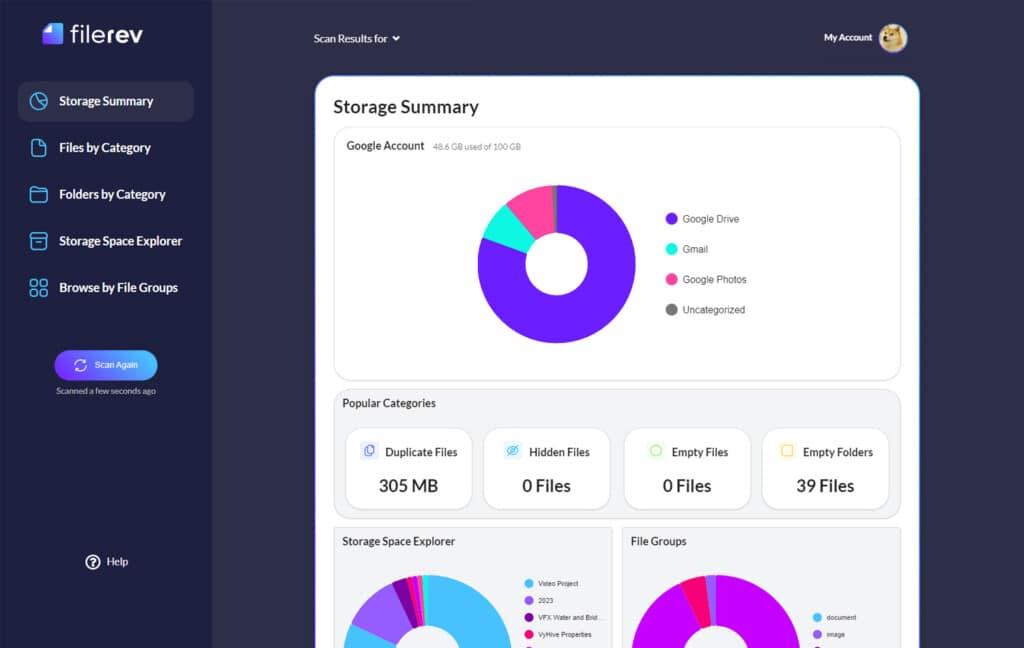
Filerev is an app I developed to help bring auditing and review features to users with huge and cluttered Drives since Google doesn’t seem keen on adding those features themselves. Or, rather, making them accessible; everything I do is doable through the API; it’s just a matter of programming a system to handle it. Rather than trying to come up with the specific API calls yourself, why not just use my app to do it?
If you want a rundown of all of the features Filerev offers, or if you want to check out the (very reasonable) pricing, just click around in the menu above. Alternatively, sign up for a free trial and give it a shot yourself. I promise it’ll help you clean up a lot faster than messing with everything manually.

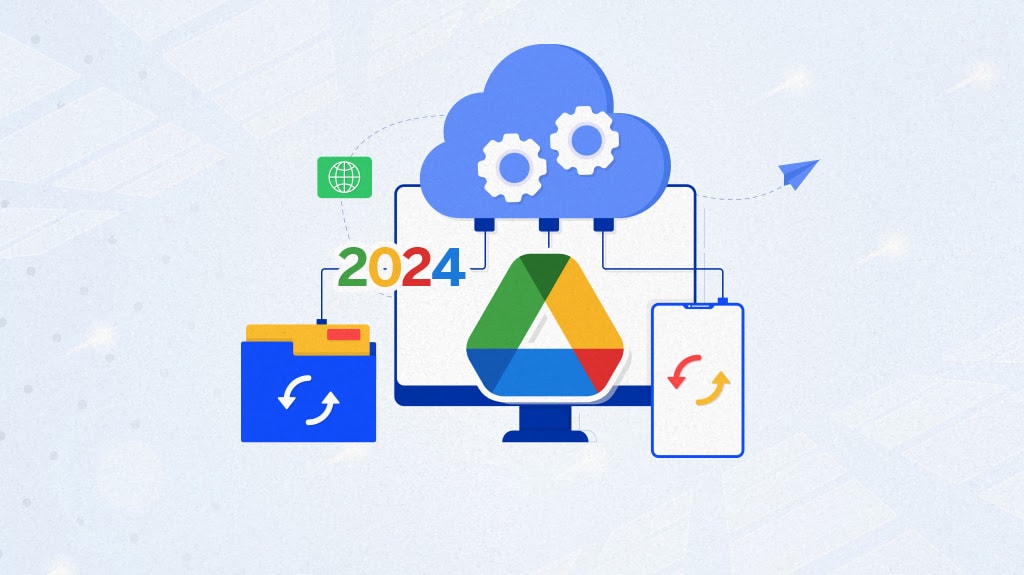

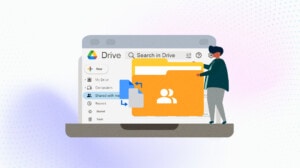
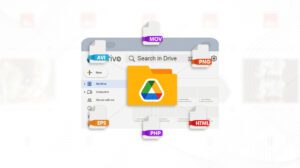
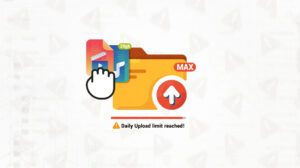

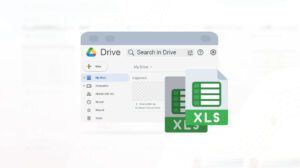

Leave a Reply